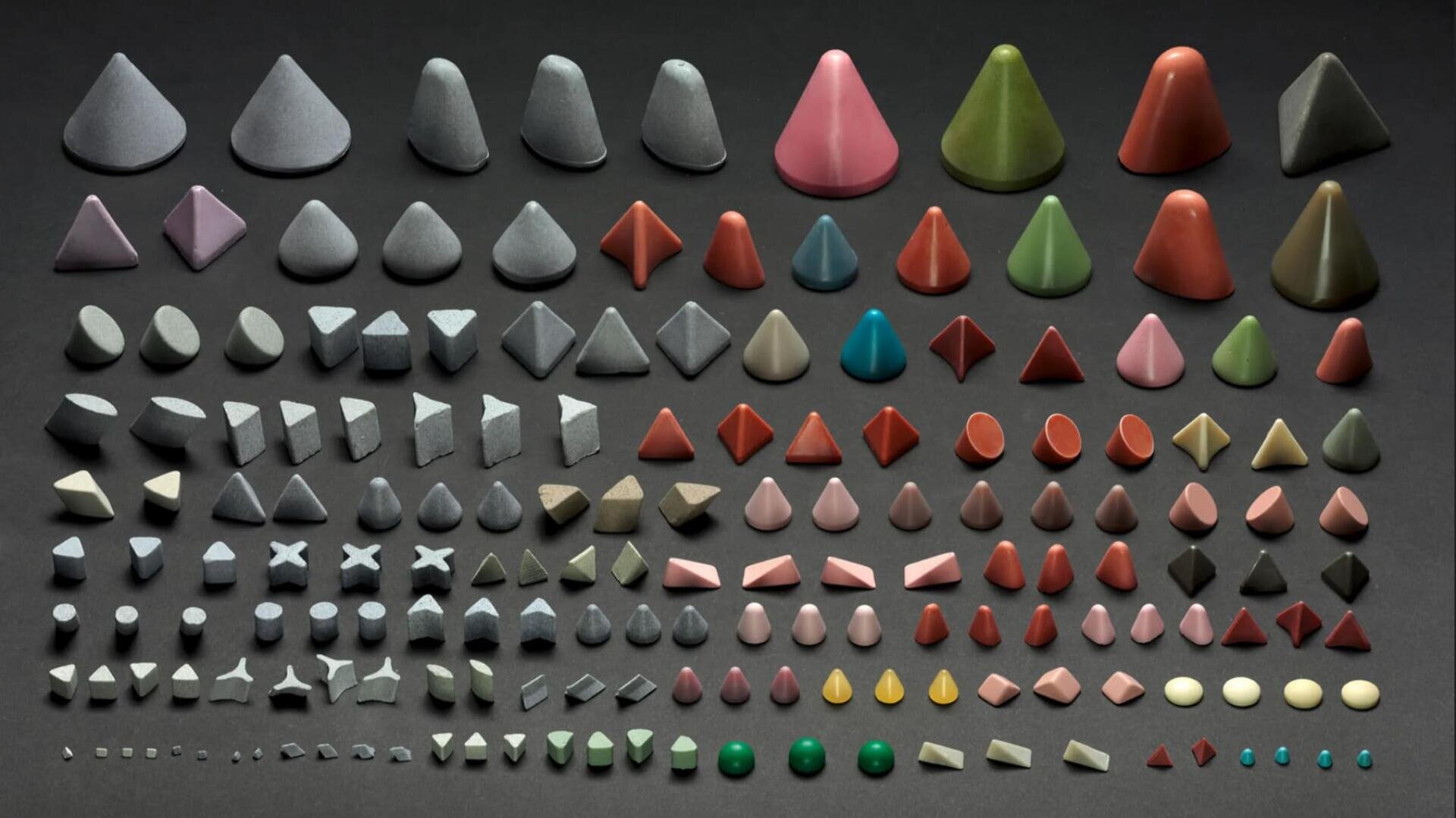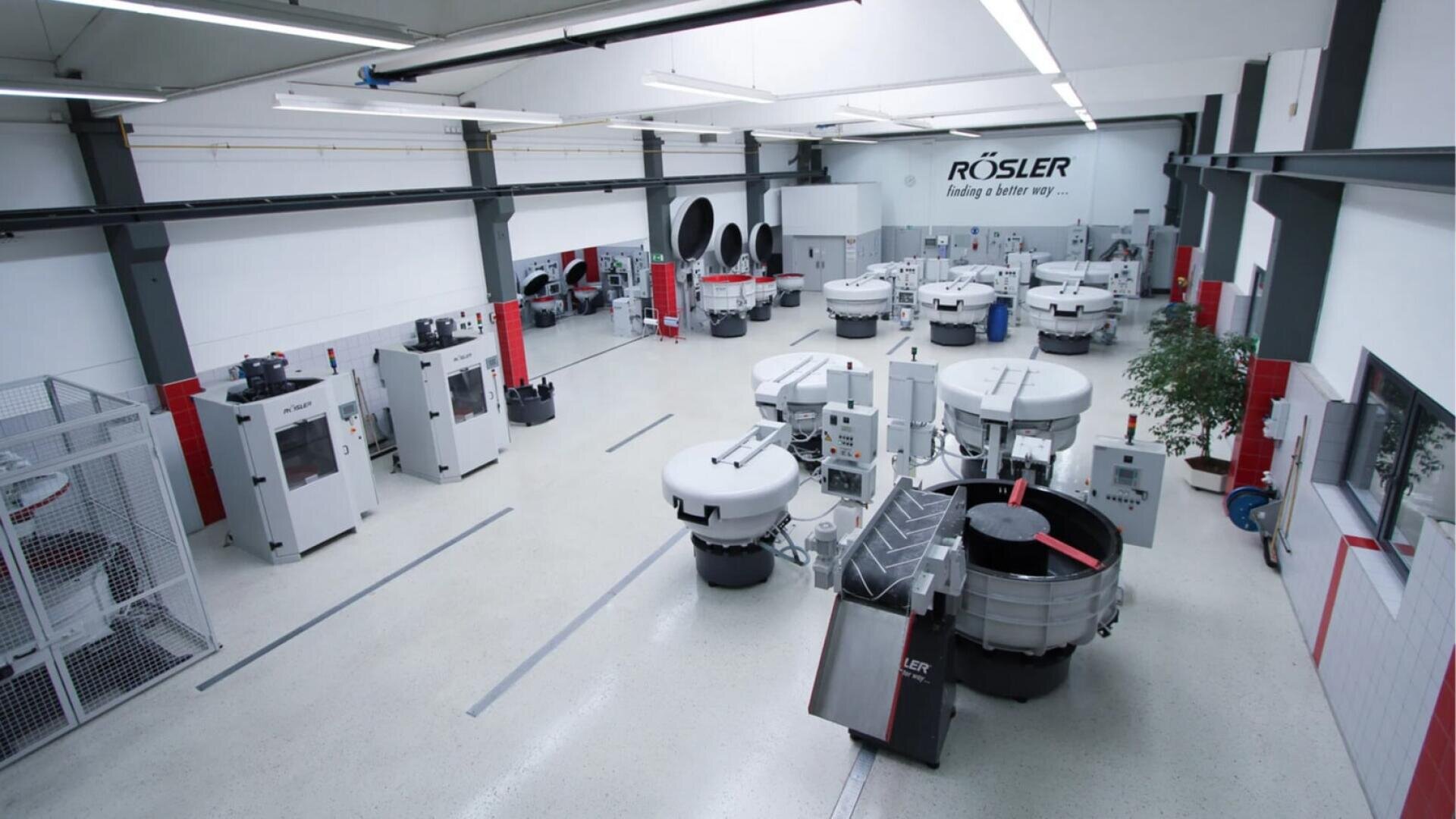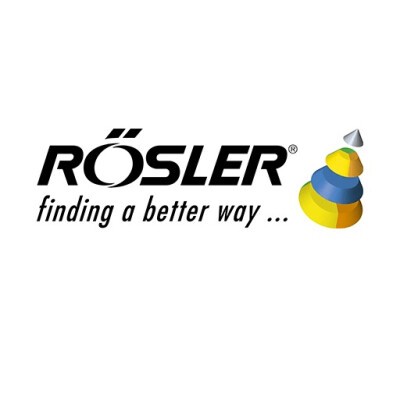Mass finishing success with careful media selection
The importance of the media selection in any surface finishing process cannot be emphasized enough. These consumables are essential “precision tools” for achieving the specified results. Selecting the right media is a complex task. That’s why you should consult an expert such as Rosler for guidance.
Consider the Characteristics
The work pieces should always be at the center of the media selection process and take into consideration its starting surface burr condition, material, shape, size, and desired surface finish. Media characteristics must complement the work piece as well as the machine being utilized.
Media characteristics to consider in relation to work pieces and the machine utilized include:
| Bond | Ceramic media generally has a higher density than plastic media, making ceramic more aggressive. While typically more gentle, plastic media can sometimes produce unwanted foam known as “dirt foam.” |
| Type/Abrasiveness | Deburring/edge radiusing and/or aggressive surface grinding require a more abrasive media than gentle surface smoothing. |
| Shape | Media may have to reach very tight corners and internal passages. Choosing the right media shape is crucial for reaching all critical surface areas. |
| Size | Always choose the largest possible media that fulfills the finishing tasks for the most efficient process. |
| Lodging issues | Media lodged in the work piece can have disastrous consequences for downstream manufacturing. Selecting a media shape and size that prevents lodging is crucial. |
| Color | Choosing a media color that differs from the work pieces helps identify lodging issues. |
| Potential for damage | For delicate work pieces, gentle yet effective media must be selected to avoid bending thin walls or damaging critical sealing areas requiring a tight fit. |
| Separation | Reliable media separation from the finished work pieces must be allowed by screens, inverse screens, magnetic separators, or, in extreme cases, manual separation. |
| Intensity | More intensive machines such as centrifugal disc systems or drag finishers usually require smaller, less abrasive media than vibratory models such as rotary and tub vibrators. |
Analyze Ongoing Costs
Since finishing media is a consumable that wears and must be regularly replenished, cost is an ongoing concern. In some finishing process, the expenses for media account for more than 50% of the total process costs. Therefore, it is important to select a media that is both economical and effective to maintain a viable mass finishing process.
While media costs also play an important role in the selection process, media choice should never be determined by price per pound. Instead, the media cost per work piece should be a guiding factor.
For example, a lower priced media might require much longer processing times or wears a lot faster and would therefore be less economical than a higher priced media that achieves the desired finishing results in less time and has a lower wear rate!
Partners in Testing
Whether your process uses ceramic, plastic, or drying and polishing media, a crucial step in selecting media should always be contacting the experts, i.e. your supplier.
Since a media change might require extended test trials, your supplier should partner with you to test prospective media with your specific work piece in their test lab.
The Rosler Way
With more than 80 years of experience in surface finishing, the Rosler team is well equipped to prove media selection guidance. We also offer FREE sample processing in our global test centers. Contact us for all of your mass finishing needs!



